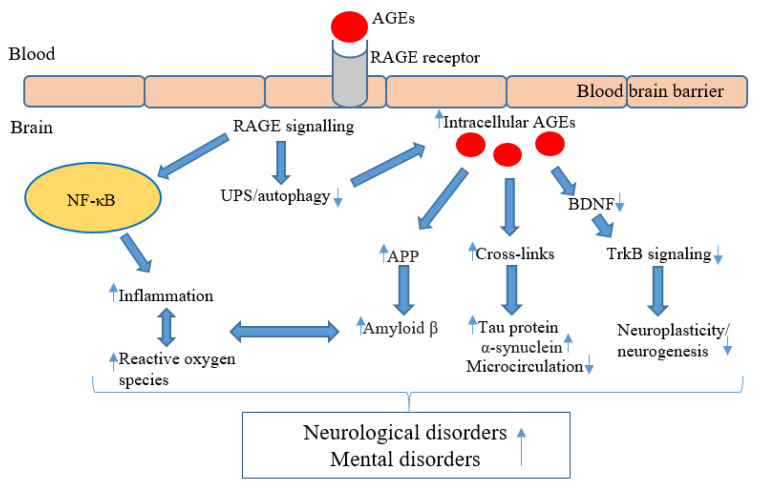Figure 1.
Molecular pathways underpinning the effects of AGEs in the pathogenesis of neurologicognitive and mental disorders. AGEs bind to the RAGE receptor located on the blood–brain barrier, which allows AGEs to enter the brain and to also activate RAGE signalling [98]. RAGE signalling activates nuclear factor kappa B (NF-κB) within glial cells, resulting in the activation of pro-inflammatory cytokines and reactive oxygen species (ROS) production within the brain [77]. The neuroinflammation and ROS support amyloid beta (β) production and promote neuronal cell death [85]. RAGE signalling and production downregulates specific AGE detoxification pathways, involving the ubiquitin–proteasome system (UPS) and autophagy [26,83]. This impaired detoxification further contributes to intracellular AGEs accumulation and upregulating amyloid precursor proteins (APP), leading to amyloid β production [85]. AGEs form cross-links with aggregate tau protein and alpha-synuclein [63,99], in addition to possibly impairing the brain’s microstructure through protein cross-links [91]. AGEs may reduce the brain-derived neurotrophic factor (BDNF) and tropomyosin receptor kinase B (TrkB) signalling pathway, thereby impairing neuroplasticity [87]. ↑ = increase/upregulate, ↓ = decrease/downregulate.

